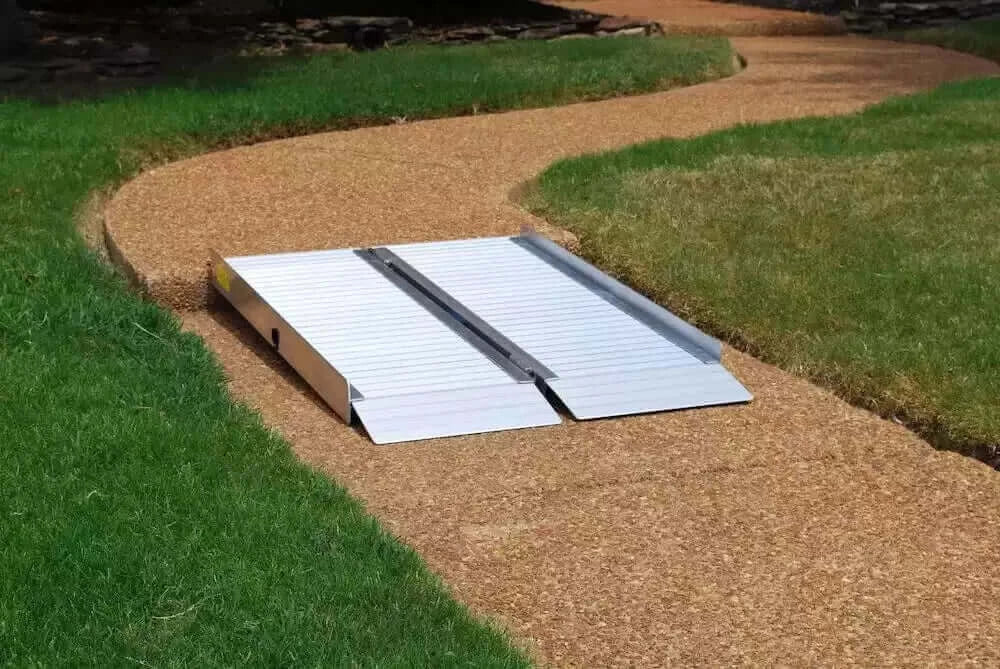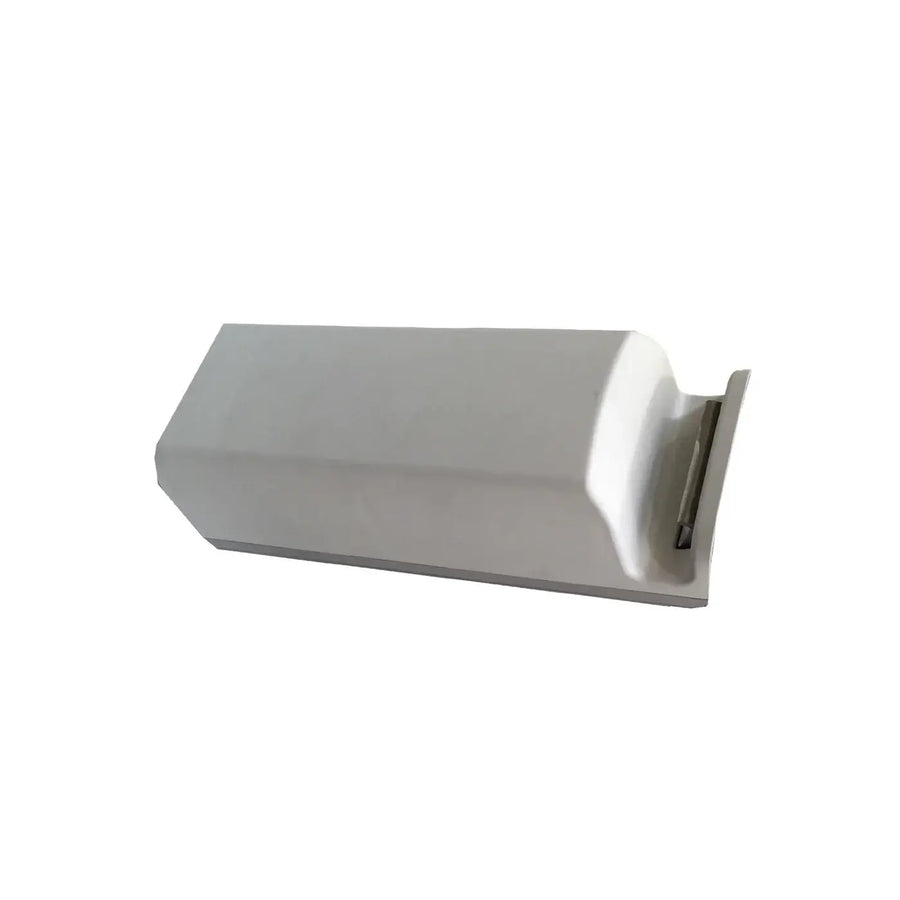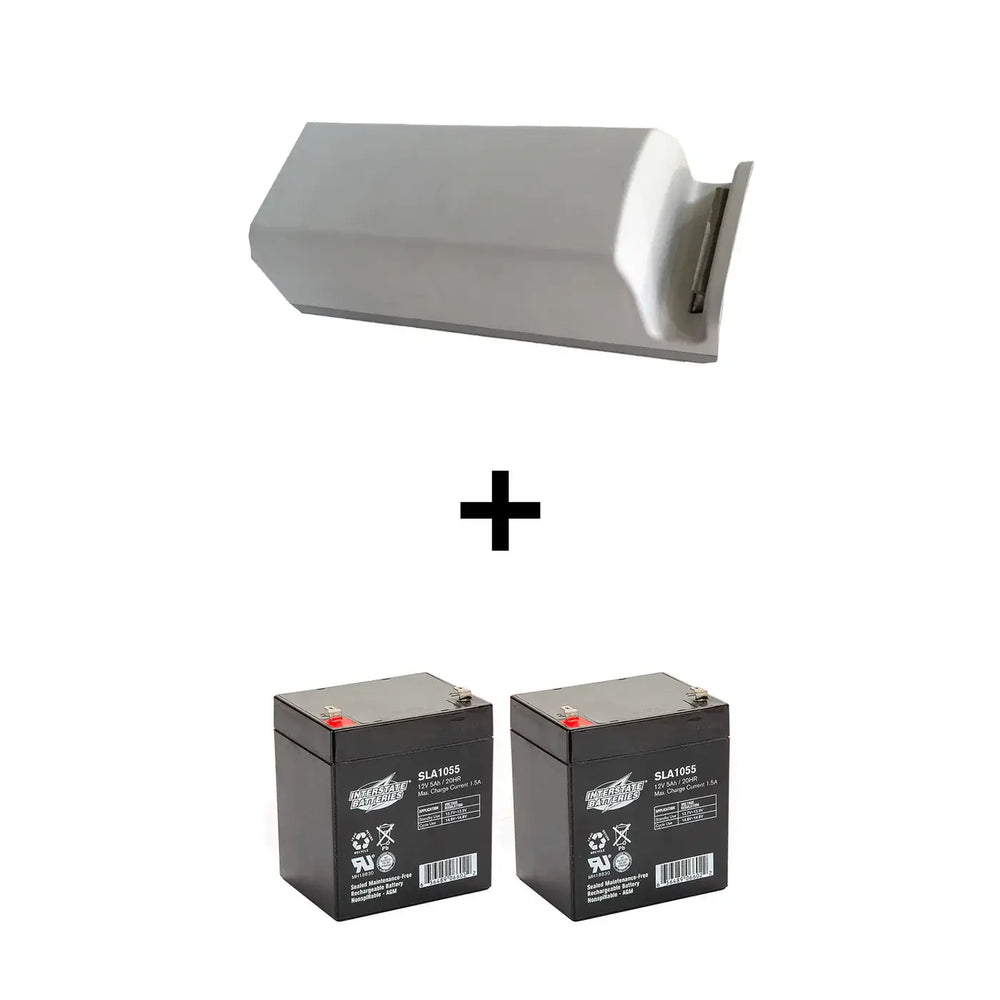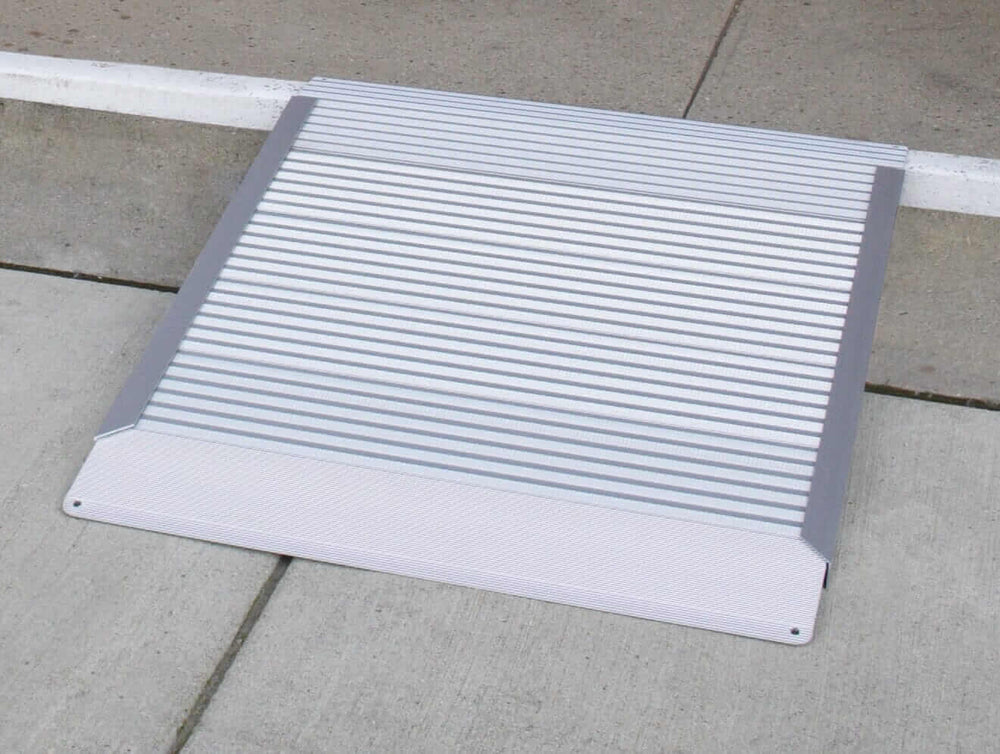Descending Ramps In Wheelchairs
Introduction
Navigating ramps can be intimidating for first time users and, ultimately, a daily challenge. With the right techniques and guidance, though, it becomes an empowering experience. In this blog, we'll take you through the essential tips—from selecting the right ramps to mastering body positioning and effectively using wheelchair brakes.
Whether you're a wheelchair user or a caregiver, this guide offers practical insights for a more accessible and enjoyable journey. Our aim is to equip you with the knowledge and skills needed to make your descents smooth and safe. Let's dive into the details and ensure you approach ramps with confidence and ease.

Table of Contents
Using The Right Ramp
Going down a wheelchair ramp starts with a crucial choice if you have it —the right ramp. Whether you're navigating independently or assisting someone with mobility challenges, selecting a suitable ramp is key. Not all ramps are created equal, so understanding the significance of your choice is paramount.
For more information on the different types of ramps, visit our blog, “The Complete Guide to Choosing Your Wheelchair Ramp” to help determine what the best ramp for your requirement is going to be.
For situations where you’re using someone else’s, or a public ramp, evaluate the slope and surface conditions diligently, as they directly impact the ease and safety of your descent. When available, opt for a gentler slope, especially if you're refining your wheelchair skills. Steeper inclines demand advanced control techniques. Additionally, prioritize smooth and well-maintained surfaces to ensure a stable journey. A quick assessment of these factors before your descent sets the stage for a safer and more enjoyable experience. Choose wisely and make your wheelchair journey down ramps a smoother, more accessible adventure.


Preparing For Descent
Heading down a wheelchair ramp demands attention to detail, and a quick but essential checklist can make all the difference. Begin by (1) assessing the condition of your wheelchair, with a particular focus on the functionality of the brakes. Responsive brakes are pivotal for maintaining control during the descent, providing the necessary support for a gradual and secure journey.
Simultaneously, (2) ensure your wheelchair is optimally positioned for the upcoming descent. Proper positioning involves a balanced distribution of your body weight, aligning yourself in a way that fosters optimal control. This step not only enhances stability but also sets the stage for a smoother navigation experience. Finally, (3) make sure there isn’t anything hanging off your wheelchair or anything else that could disrupt the path of the wheelchair.
By prioritizing this straightforward yet crucial preparation—checking your wheelchair's brakes, positioning and a clean path—you lay the foundation for a confident and controlled descent down ramps. These proactive steps not only contribute to safety but also elevate the overall experience, making your journey down ramps both secure and enjoyable.
Body Positioning
Navigating the descent on a ramp while you’re using your mobility aid requires comfortable body positioning to ensure both safety and control. Achieving the right alignment and weight distribution is important for a seamless experience.
Start by positioning your wheelchair straight and centered on the ramp, aligning the wheels parallel to the edges. Sit upright against the backrest, maintaining a straight posture and keeping your head up to establish a stable center of gravity. Avoid excessive leaning forward or backward while traversing the ramp.
Distribute your weight evenly between the wheels, preventing any risk of tipping. Engage your core muscles to add extra support and balance. Utilize your arms and hands strategically, adjusting your grip to brace against the wheelchair for a secure hold. Descend the ramp slowly and with controlled movements to ensure stability, steering clear of abrupt actions that may compromise your control.
Not only do these best practices prevent tipping and enhance overall stability, but they also foster confidence, reduce muscle strain, and minimize the risk of accidents. By using proper body positioning, wheelchair users can confidently and independently navigate ramps with a significantly lowered risk of mishaps. This ensures a smoother experience while catering to the specific needs of individuals relying on wheelchairs.

Utilizing Wheelchair Breaks
Descending ramps in your mobility aid necessitates a keen understanding of the chair’s brake system, whether manual or power-assisted, for a safe and controlled descent.
In manual wheelchairs, locate and maintain your brakes before the descent, applying them gradually to ensure a smooth ride. Power-assisted wheelchair users should grasp electronic controls and tailor brake sensitivity for personalized comfort, consulting professionals for optimal settings.
The significance of gradual braking extends beyond control; it conserves power in electric wheelchairs, extending travel distance on a single charge. This approach not only ensures a secure descent but also boosts user confidence, aligning with a smoother, more independent ramp navigation.


Maintaining Speed Control
Achieving a safe descent down ramps in wheelchairs involves mastering speed control—a vital skill for confident ramp use. Focus on maintaining an upright posture and utilizing gradual brake application for manual wheelchairs. Power-assisted wheelchair users should adjust sensitivity in electronic braking systems for optimal speed management. Additionally, exploring the wheelie technique in a controlled setting can empower manual wheelchair users to fine-tune their speed.
Understanding how momentum affects your wheelchair, too, is important.
Uphill, maintain a steady pace to conserve energy.
Downhill, start with a deliberate and slower speed, avoiding sudden accelerations for stability.
Adapt your speed based on the ramp's characteristics, slowing down on steeper sections and gradually increasing on gentler slopes. Incorporating these strategies ensures a controlled descent, contributing to a positive and empowered wheelchair experience.
Scanning For Obstacles
Before descending a wheelchair ramp, ensure a safe trip by scanning for potential obstacles. Anticipate hazards like debris or slope changes for real-time adjustments. Assess surface conditions for proactive speed adjustments.
If you do happen to encounter an obstacle while going down the ramp, adjust your speed allowing you a safe trip, and make sure you’ve practiced your steering techniques so you're confident when using the ramp. Leverage your wheelchair features, such as anti-tip devices, to enhance stability. Being proactive ensures a safe, empowered, and independent experience when navigating ramps.


Seeking Assistance
Navigating ramps safely involves recognizing when assistance is crucial. Assess the ramp's difficulty, considering factors like steepness or obstacles, and determine if additional support is necessary. Be attentive to physical fatigue; if controlling the descent becomes challenging, seeking help is a proactive safety measure for unfamiliar or unpredictable terrain.
Effective communication is pivotal. Establish an open dialogue with caregivers or attendants, sharing comfort levels and preferences for ramp descents. This ensures a collaborative and supportive approach.
Furthermore, encouraging bystanders to offer assistance fosters a welcoming environment, and gives you that much more confidence when using the ramp.
The benefits of seeking assistance are valuable. It enhances safety by providing an extra set of eyes and hands to navigate challenges, contributing to increased confidence and a positive wheelchair experience. This collaborative approach, emphasizing when assistance is needed and effective communication, strikes a balance between independence and safety, ensuring a safer, confident, and empowering experience on wheelchair ramps.
Practicing Descent Techniques
Having wheelchair control on ramps is essential, and practical exercises can make a significant difference. Start with straightforward descents on gentle ramps, gradually incorporating braking techniques for speed modulation. Build your skills up to turning exercises on curved ramps, experimenting with different turning radii. Introduce obstacles for enhanced maneuvering skills. Gradually advance from simple to more complex ramps, adapting to changes in slope while maintaining control. Finally, practice on varied surfaces to prepare for the diverse environments you can encounter.
This practice offers numerous benefits. Regular practice instills confidence and independence during descents, it improves safety awareness, and equips users with adaptable skills for different terrains. Mastering these descent techniques through exercises and gradual progression contributes to your enhanced confidence, control, and adaptability for wheelchair users navigating ramps.

Conclusion
Navigating ramps can be daunting, presenting a daily challenge for many. However, prepared with the right techniques, this experience transforms into one of empowerment. This blog is your guide, covering essential tips from selecting the right ramps to mastering body positioning and utilizing wheelchair brakes effectively.
Whether you're a wheelchair user or a caregiver, our aim is to offer practical insights for a more accessible and enjoyable journey. Our goal was to equip you with the knowledge and skills needed to make your descents smooth and safe, ensuring you approach ramps with confidence and ease. As always, please contact our Reliable Team, or call us at 888-307-1839 and we’ll be happy to be a resource for you!
Let Us Know What You Think!
Your thoughts and questions are incredibly valuable to us, and we'd love to hear from you. If you have additional insights to share, your comments can spark meaningful discussions and enhance the collective knowledge of our community. Don't hesitate to ask any questions you may have; our team is here to provide answers and engage with you. So, please, take a moment to leave a comment or question below. Your input is much appreciated!
















Leave a comment